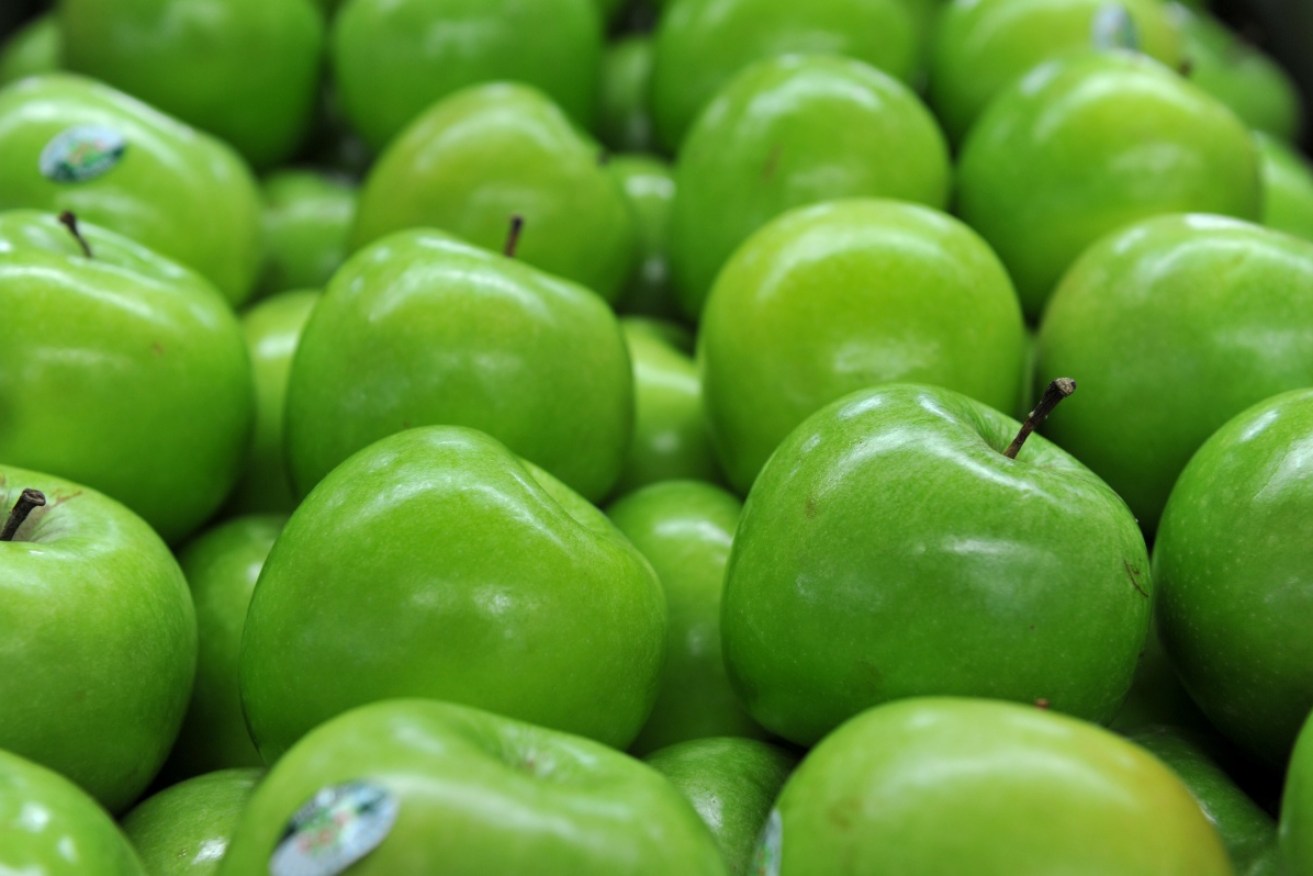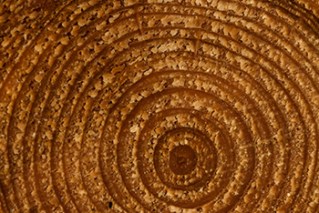In 1868, Maria Ann Smith stumbled upon a freak of nature, or perhaps a miracle, sprouting from a pile of rubbish in her yard. Almost 150 years later, scientists now believe her discovery, a strange crab apple, may be a powerful weapon in the global fight against obesity.
Ms Smith, better known as ‘Granny’, found the mutated seedling among food scraps at her Sydney orchard in 1868, which new research says may promote weight loss.
Despite having no idea what it would taste like, Granny carefully nurtured the tiny tree until it bore a green fruit, now proven to have high levels of anti-fat compounds.
• Research uncorks secret to stopping deadly disease
• Birth control? There’s an app for that
• The truth about artificial sweeteners
Granny Smith apples were first approved for export in 1890 and have since become globally famous. So when US researcher Giuliana Noratto wanted to test the health benefits of the most familiar and widely available of the more than 7000 known apple varieties, Granny Smith was one of the chosen few.
Ms Noratto, assistant professor in food science at Washington State University, fermented seven apples, Granny included, in bacteria growing flasks to replicate the journey of the fruit through the human lower intestine.
She discovered that Granny Smiths have far more phenolics (a non-digestible compound that may fight obesity), as well as much higher levels of dietary fibre.

Maria Ann Smith may have lucked upon an obesity treatment. Photo: Supplied
Phenols work like a probiotic, boosting the growth of good bacteria in the gut. Those who are obese often have a “disturbed balance” of these bacteria, Ms Noratto explains to The New Daily.
“If we change the relative proportions of bacteria by diet, making the proportions of bacteria communities more similar to those found in lean subjects, this could be an approach to help prevent obesity,” she says.
In Greek mythology, the Chimera is a two-headed fire-breathing goat-lion hybrid with a fanged snake for a tail. No less a gift from the gods, the Granny Smith, like all apples, is a genetic chimera – a fruit that introduces new gene material into its seeds – that luckily happened to be far tastier (and possibly healthier) than the discarded core of a French crab apple from which it probably grew in Granny Smith’s compost bin.
Australian scientist Jayde Lovell, who lives in New York and hosts the YouTube Channel Did Someone Say Science, says research on the impact of apples and other healthy foods on gut bacteria is “extremely important” to the treatment of worldwide obesity.

Granny Smith apples may get rid of bad bacteria. Photo: AAP
Current research suggests that certain kinds of ‘bad’ bacteria trigger an immune response in the lower intestine that inflames the bowel. This inflammation is thought to possibly lead to insulin resistance, type 2 diabetes and eventual obesity.
“The overall findings of the research are that poor eating and a sedentary lifestyle can encourage a cycle of over-eating. The good news from this study is that this cycle can be broken with healthy eating habits and a diet high in fibre, particularly from Granny Smith apples,” Ms Lovell told The New Daily.
Since making her finding, published this month in the well-regarded journal Food Chemistry, Ms Noratto has become a firm believer in Granny Smiths, eating at least one a day.
“I feel better, my digestion has improved a lot and helps to keep my good health,” she says.
Noratto, who does not receive funding from the apple industry, is now conducting tests of the apple’s fat-busting properties in rats, and hopes to publish this second study within a year.
Like the story of Eden’s forbidden fruit, or Jack’s magic beanstalk, the fable of Granny Smith has passed down the generations to great-great-great granddaughter Sue Butler, who as a young girl would eat the apples straight from the trees at her father’s orchard in Orange, NSW.
Ms Butler (nee Spurway) of North Rocks, NSW, says everyone on her side of the family lives well into their 90s and attributes their longevity to eating lots of Granny Smiths. Her aunt Edna Spurway passed away in 2011 at the age of 101.
“They’re all very long livers, the Spurway side, all of them,” Ms Butler says. “They always put it down to that.”

Fruit is best eaten when in-season. Source: AAP
Previous research backs up the latest finding. A study published in 2010 in The Journal of Food Science found Granny Smith peel to be very high in fibre and phenolics, and low in calories. A 2005 study published in Food Chemistry found the apple to be high in fibre.
Another study from 1990 compared the fibre content of various Australian fruits, and found the Granny Smith – the third most popular apple after the Pink Lady and Gala – to be very high compared to Golden Delicious apples.
Australian Dietitians Association spokesperson Milena Katz is not surprised Granny Smiths may promote good health, but cautions that human trials are needed to put Noratto’s theory fully to the test.
Apples are “on the whole incredibly healthy” and “a really great snack” because they suppress hunger and release energy slowly into the body, rather than spiking blood sugar as does junk food, Katz says. Just be sure to eat the whole fruit with the skin on, rather than drinking the high-calorie juice, she says.
But other fruits and vegetables should not be ignored because of a handful of studies on the Granny Smith, Katz says.

Australians eat an apple a week, not a day. Source: AAP
In 2012-13, apples were Australia’s third largest fruit crop by production (288,878 tonnes) after oranges and bananas, and second biggest by value ($441 million) after bananas.
Nielsen data for this year shows that around 18 per cent of supermarket sales by volume are Granny Smiths. Victoria is the leading producer, with 52 per cent of production occurring in the state, or about 27,000 tonnes, much of which is frozen to ensure a year round supply.
“Apples are not supposed to be eaten all year round,” Katz says. “You can, but it is better to eat fruits seasonally because they are fresher and you get a variety throughout the year.”
Those prone to acid reflux should also be careful of overeating the slightly sour fruit, Katz says, recommending no more than two apples a day.
The average Australian eats about 8.5kgs of apples per year, or about an apple a week, according to peak industry body Apple and Pear Australia (APAL).
“We’d love to see people increase their apple consumption, even to twice this,” APAL chief John Dollisson says. “An apple a day would be even better.”

Australians are recommend to eat two pieces of fruit each day. Photo: AAP
Australia grows less than one per cent of the world’s apples, and yet it has two of the world’s “most loved and well-known” cultivars in the Granny Smith and Pink Lady, Dollisson says.
Deakin University’s Tim Crowe, an expert in nutrition science, tells The New Daily that all apples are a good source of vitamin C, potassium, fibre and antioxidants. He is sceptical of any claim that Granny Smiths are better than the red varieties of apple.
The suggestion that Granny Smiths have the greatest benefit on gut bacteria is “too preliminary” to make the apple superior to other fruits, Mr Crowe says.
“All fruits contain different levels of a range of hundreds of potentially health promoting compounds and it is the variety of these in the diet that gives the best health, rather than eating more of one particular fruit for example,” he says.
The Australian Dietary Guidelines recommends two pieces of fruit per day, but does not specify which type.
“If you like Granny Smith apples, keep eating them,” Mr Crowe says.
One town that will certainly be enjoying the fruit this month is the apple’s birthplace of Eastwood, NSW.

Former Prime Minister John Howard meets the Granny Smith festival mascot in his seat of Bennelong in 2007. Source: AAP
A festival celebrating the fruit and its founder is held in October each year, swelling the local population of approximately 16,000 to over 90,000, event organisers say.
The highlight is a 2000-strong street parade complete with marching band, mounted police, floats, dancers and school groups, with Granny Smiths handed out to spectators.
If you happen to attend the festival this year, perhaps steer clear of the hundreds of food stalls selling sausages, burgers, cookies and churros, and go for one or two apples instead.
It’s what Granny would have wanted.









